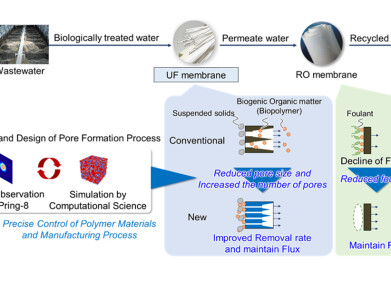Water/Wastewater
What is Driving Wild Chinese Sturgeon to Extinction?
Sep 30 2014
One of the oldest living species of animal in the world, the wild Chinese sturgeon, has been around for more than 140 million years. Recently, it entered the “critically endangered” category on the International Union for the Conservation of Nature’s list of threatened species – that’s just one rung below “extinct in the wild”. Why is this stalwart of nature flagging? The problem is, unfortunately, one of our own making – pollution.
Around 30 years ago, the sturgeon enjoyed a relatively healthy population of around several thousand specimens in the Yangtze River. Due to increasing levels of pollution, brought on by the boat traffic, dams and lax waste disposal methods associated with China’s economic boom, that figure has fallen to a paltry 100, according to Wei Qiwei, an investigator of the Chinese Academy of Fishery Sciences.
Falling Figures and Non-Existent Birth Rates
Even more alarmingly, last year was the first year in which no eggs or young sturgeons were discovered by the Academy in the 32 years that it has been keeping records. Such eggs, normally found in the Hubei province in the heart of China, were conspicuous by their absence, as were the fledgling sturgeons making their way through the Yangtze to the open sea in August 2013 – the period when they are most commonly observed.
“No natural reproduction means that the sturgeon would not expand its population and without protection, they might risk extinction,” stated Qiwei in an interview with Chinese news station Xinhua earlier this month. Why are the fish not reproducing? Well, in addition to rising levels of contamination of the river, which make it difficult for anything to survive in the already substantially muddied waters of the Yangtze, there are also other concerns.
Sacrificing Nature for Profit
In recent years, the Yangtze has been the site of the construction of many dams, including The Three Gorges, which is currently the largest of its type in the world. Whilst these dams aid the economy and rapidly-expanding industry of China, they give little thought to the disruption they cause to the natural habitats of many animals. Being forced to relocate from where they have called home for more than a hundred millions years looks to finally have taken its toll on the sturgeon’s already fragile population.
The increased boat traffic which goes hand-in-hand with such economic advances has also increased the number of fish being killed by boat propellers. Furthermore, fishermen’s nets have dealt another blow to the endangered species, meaning that if they are unable to reproduce next year, they could very well face extinction.
Currency Crushes Creation over the Last 50 Years
The ancient sturgeon are not the only ones to suffer at the hands of Chinese urbanisation. Since 1955, the population of the Chinese alligator has fallen by a staggering 97%, while in the last 30 years, the population of dolphins in the Yangtze declined by 99.4%.
Though these Chinese figures are perhaps more dramatic and headline-grabbing because of their urgency and contemporariness, they should not be seen as an isolated problem. Indeed, in the United States, the Atlantic sturgeon is barely escaping extinction in the Hudson River, while those in the Connecticut River are prevented from breeding by the presence of the Holyoke Dam in Massachusetts.
The fall of the sturgeon is symptomatic, rather, of a global neglect of nature – a microcosm of the world’s problems, regarding the systematic human decimation of our planet for material gain.
What Next?
Unfortunately, the problems caused by pollution are set to continue in China, especially when you consider that Chinese power plants emit as much NOx as all the passenger cars in the world.
Events
Apr 15 2025 Moscow, Russia
Apr 21 2025 Shanghai, China
May 11 2025 Vienna, Austria
May 18 2025 Algiers, Algeria
23rd International Water Management Exhibition
May 20 2025 Prague, Czech Republic














